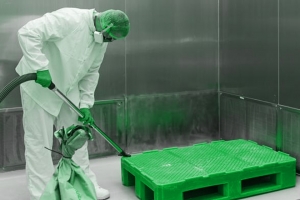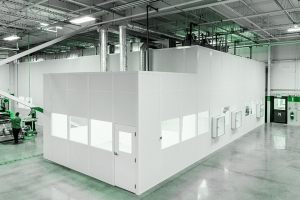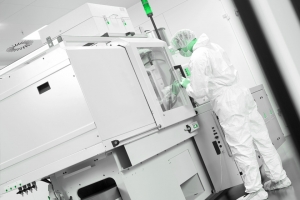Displaying items by tag: maintaining
Maintaining cleanrooms and clean manufacturing areas
Key concepts Cleanrooms and clean manufacturing areas require special maintenance considerations. Sources of contamination are environment, process, tools, and people.
Monitoring - Maintaining a Clean Room
Recently, many industries from pharmaceutical, biotechnology, medical device, hospital pharmacies and medical disposables have clean room operations of differing sizes and complexities. Clients in these industries have recognized that there is a regulatory compliance to demonstrate clean room performance and controlled product bioburden with monitoring the environmental conditions in their aseptic manufacturing areas.
Maintain your Raised Floor
To maximize your investment in your Raised Floor, regular maintenance is a must. All raised floors require preventative maintenance to insure safe operating conditions for equipment and personnel. Listed below are the requirements for proper raised access floor maintenance and care:
Maintaining Cleanroom Equipment
Stringent standards and safety protocols are put in place to ensure that products manufactured and inspected in cleanrooms will not pose any hazards to the end user.
Maintain Cleaning Equipment
Today, when most of us purchase a new electronic device, just about whatever it is, the first thing we do is take it out of the box, plug it in, and start it going. No reading manuals; no watching instruction videos; if a quick start-up guide is included, maybe we’ll take a look at it.
The problem with this plug-and-play mentality is that we can pay a high price for it. We typically do not reference the manual until something goes wrong. Very often at that point, we find out the problem we are now facing could have been avoided with proper equipment maintenance practices — what started out as a minor equipment issue has now become a major repair cost.
When it comes to cleaning equipment, the high price that managers of controlled environments may pay can be very high indeed. This is why they must stress that their cleaning professionals, whether in-house or contracted, properly maintain their cleaning tools. For instance, if airborne dust is released from a poorly maintained vacuum cleaner, it can damage work areas and experiments. Poorly maintained floor machines can do the same as well as possibly damage the floor’s finish or the floor itself. The point is this: plug-and-play is great, and a time saver; but disregard plug-and-maintain when it comes to cleaning equipment at your own peril.
To help cleaning professionals and administrators avoid these pitfalls, below are some common equipment maintenance issues often included in the owner’s manual that get lost in our plug-and-play world.
Modular cleanrooms are popular
Modular cleanrooms are becoming increasingly popular in a wide range of industries. Quick to install and easy to maintain, this type of cleanroom can be suitable for many applications, ranging from medical and pharmaceutical work to manufacturing. If you're not sure whether a modular cleanroom design is right for your organization, why not take the time to learn about the benefits of this type of environment? The following could convince you to try out this type of cleanroom in your own company.
Maintaining a Cleanroom
Many industries from pharmaceutical, biotechnology, medical device, hospital pharmacies and medical disposables have clean room operations of differing sizes and complexities. Clients in these industries have recognized that there is a regulatory compliance to demonstrate clean room performance and controlled product bioburden with monitoring the environmental conditions in their aseptic manufacturing areas. Environmental Monitoring (E/M) is a program designed to demonstrate the control of viable (living microorganisms) and non-viable particles in critical areas. These areas include clean-rooms for drug fill/finish, formulation tank rooms, laminar flow hoods, biological safety hoods, isolators, glove boxes, molding machines, kit assembly lines, Intravenous (IV) compounding areas and sterile packaging. This article will discuss environmental monitoring from a viable particles perspective. Viable monitoring refers to testing for the detection and enumeration of bacteria, yeast and mold. It includes the monitoring of personnel, air and area surfaces for microbial contamination. And differs from non-viable environmental monitoring which is a reference for particle counts measured by a laser counter. Viable counts provide metrics on the potential for contamination of a company’s products as well as demonstrating the veracity that a clean room is functioning as designed and being properly maintained. Surface and air monitoring exhibit the asepsis of the product manufacturing operation.

















